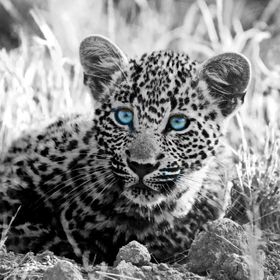

claudia_lothering_1704
Follow
Views
182
Likes
Awards
Winner in Wild Creatures of the World Photo Challenge
Absolute Masterpiece
Superb Composition
Top Choice
Magnificent Capture
All Star
Peer Award
Outstanding Creativity
Categories
Same photographer See allBehind The Lens
Discover more photos See all
Behind The Lens
Location
This photo of the King Vulture was taken at a bird sanctuary in the Western Cape in South Africa. This bird sanctuary has big open enclosures through which you can walk and see the birds free flying. The bird sanctuary provides habitat for injured birds and rehabilitates them and also takes confiscated birds that were illegally imported into the country. This King Vulture is affectionatelly called MaxTime
I saw Max late in the afternoon walking through the vulture enclosure. He was sitting on a branch. Fortunately it was quite and most people had left. I immediately sat down not to scare Max and he remained seated. To my delight he did not move and I was able to take some nice shots of him. I got the feeling he was posing for me and acknowledged me by looking at me often.Lighting
I wanted the colourful colours of Max to stand out against a dark background so I adjusted the lightning to accentuate his colours against the dark backgroundEquipment
I used my Nikon D5000 camera with a 70 = 300 mm lensInspiration
I loved the colours of the bird. He had a very regal posture. King Vultures are amazing creatures.The King Vulture is predominantly found in South America – Mexico and Argentina. They tend to prefer open regions where they are able to have plenty of options for food. They are fast, powerful, and have great vision. Their beak is more curved than other species of Vultures. It is also more powerful so they can get through even the toughest of animal carcasses to feed upon. The King Vulture is able to consume food that has recently died or that has been left to rot in the heat. They are able to consume it without getting ill – something that very few other living things are able to. The King Vulture has a talent for being able to conserve its energy. They are able to glide in the air using the currents from the wind. They are rarely aggressive, even to other Vultures. Other species of birds will typically leave carcasses when the King Vulture arrives. They don’t want to get into a confrontation with such a powerful bird. The King Vulture may weigh from 6 to 10 pounds. The King Vulture is very particular about finding a mate. Once a pair has decided to mate they will likely pair up every year. There usually only lay one egg annually. That enables the parents to have a better chance of caring for it. They will incubate it for about 57 days. Then the parents will take turns watching over it and bringing back food. In about 3 months the young can fly and go feed with the parents. Their lifespan can be up to 40 years in captivity. King Vultures were popular figures in the Mayan culture as well as in local folklore and medicine. According to one theory the name is derived from Mayan legends, in which the bird was a king who served as a messenger between humans and the godsEditing
I take my photo's in Raw format that allows me to adjust exposure, lightning, contrast, clarity and other features such as saturation. The photos came out very clear so I did not to do much adjustment. I added a bit of clarity and saturation. No further editing was done on the pictureIn my camera bag
I always carry my camera bag with me and depending on what I want to shoot I bring along the appropiate lenses. I am still an amateur photographer and work mostly with my Nikon 70 =300 lens for closer ups and in the open wild landscapes my Nikon 400 mm lens.Feedback
I love animal photography. It requires a lot of patience though because the animals are always moving, often into postures where you don't see the head clearly. I also love different expressions on the animal. I can often spend up to 1 -2 hours sitting watching an animal, taking shots when the animal is more animated, to get an interesting position. The animal also gets used to your presence and often relaxes and acts naturally. The greatest shots are of animals acting naturally and habitually.












































